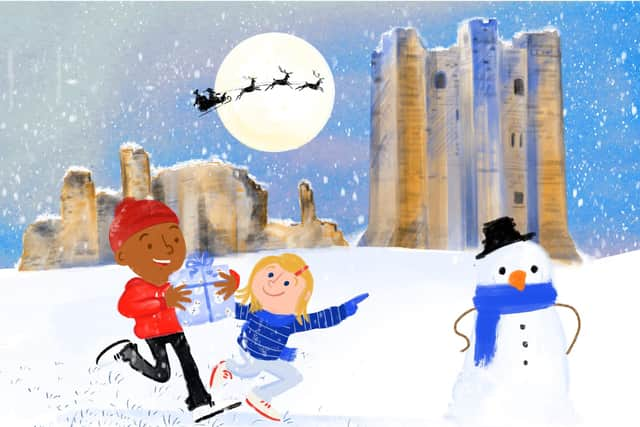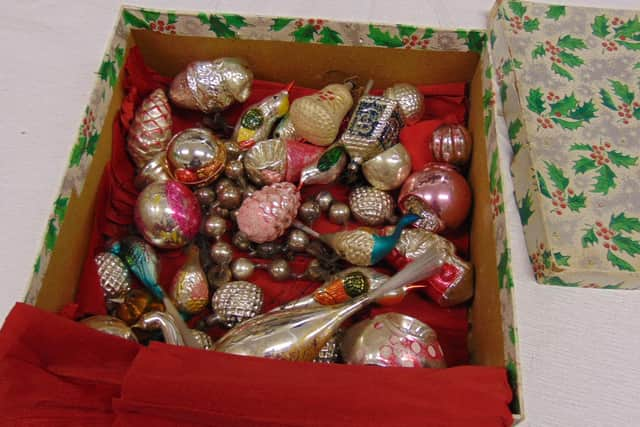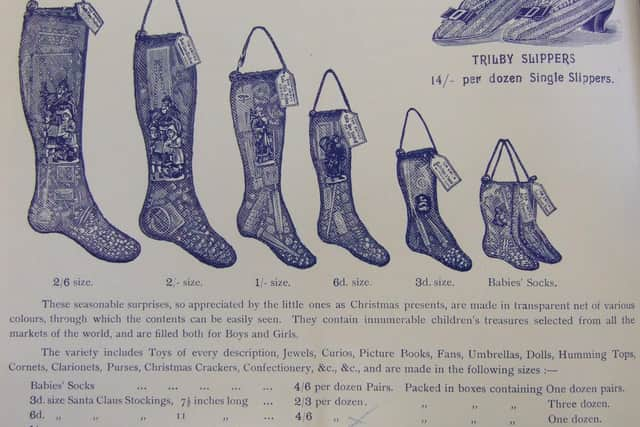Find out how the Victorians invented our merry Christmas
and live on Freeview channel 276
The heart-warming, spirit-raising Victorian classic A Christmas Carol by Charles Dickens has never been out of print since it was first published 177 years ago.
It’s been adapted – for films, TV, theatre, radio, graphic novels, even ballet and opera – more times than any other novel in history, with a new animated movie just released, starring Carey Mulligan and Martin Freeman.
Advertisement
Hide AdAdvertisement
Hide AdThe nostalgic ‘Dickensian’ Christmas has become iconic. And yet the festive picture that Dickens paints in his novel would have been strikingly new in its day, unrecognisable to people a generation or so before the book’s publication.


At the beginning of the 19th century, the country didn’t really celebrate Christmas at all - no holidays, no gift-giving. By the end of the century, it had become the biggest annual celebration in the British calendar.
Charles Dickens captured this magical moment in time – the Christmas revolution! His novel isn’t just a best-seller, it’s a thrilling historical record.
In the company of experts from Heritage Doncaster, people are unearthing the ways that South Yorkshire people celebrated Christmas during new virtual history clubs - free and open to everyone.
Advertisement
Hide AdAdvertisement
Hide AdArtists Karen Hall, Philip Sheppard and Viv Owen have also each designed a special limited-edition Christmas card featuring local landmarks, to be gift-wrapped up in Christmas activity packs created by Heritage Doncaster.


Featuring games, quizzes and fun festive facts, the packs will be sent to over 500 people who may be alone this Christmas, including care home residents.
Victoria Ryves from Heritage Doncaster shares some of the truths behind our traditions:
The Victorians gave us Christmas trees; a ‘holiday’ from work; Christmas decorations (including electric fairy lights); Christmas cards; Christmas crackers; gift-giving; roast turkey and a ‘traditional’ festive dinner; mince pies (without meat) and family festivities and parlour games.
Advertisement
Hide AdAdvertisement
Hide AdChristmas was ‘invented’ at an astonishing rate – you can see it evolving in the wonderful collections of Doncaster museums. The Victorians threw themselves into the festival wholeheartedly!


We’ve inherited the Christmas tree from Queen Victoria and Prince Albert. They were the most fashionable couple of the day and everything they did tended to be an instant hit.
In 1848, the royal family were pictured in the Illustrated London News celebrating around a decorated Christmas tree – a tradition that Albert had brought with him from his German home. Soon every home in Britain had a tree bedecked with candles, sweets, fruit, homemade decorations and small gifts.
Before the 19th century, families waited until New Year’s Day for gift-giving; the Victorians moved this tradition to Christmas Day. Initially Christmas presents were small enough to fit on the tree – handmade gifts, sweets or locally-harvested fruits and nuts.
Advertisement
Hide AdAdvertisement
Hide AdAs the idea caught on, gifts became bigger, and then people got really imaginative and started to buy presents in shops. Room was made beneath the Christmas tree for these more elaborate Christmas presents.
Wealthy children like William Battie-Wrightson of Cusworth Hall would have had enough presents to fill a new-fangled Christmas stocking.
In Doncaster’s museum collection, there’s a Christmas catalogue (another Victorian invention), where William’s mother, Lady Isabella, has marked an x next to the stocking she wanted to buy – just as we might do!
Advertisement
Hide AdAdvertisement
Hide AdThe Christmas card was invented by Henry Cole to promote the postal service in 1843, the year Dickens published A Christmas Carol.
He commissioned an artist to design a Christmas card, to be sold at one shilling each. This was a bit pricey for ordinary Victorians but the sentiment caught on and many children - Queen Victoria's included – were encouraged to make their own cards.
Cole had the last laugh, though: in 2013, one of his original cards sold at auction for £20,000!
As printing technology accelerated, the price of card production dropped significantly. The cost of sending cards was also reduced with the building of more railways.
Advertisement
Hide AdAdvertisement
Hide AdThey still weren’t quite what we might expect from a Christmas card today, though: instead of snow and glitter, you might receive a card featuring dead birds, children dressed as jockeys riding giant bats or a mouse riding on the back of a lobster – a Victorian sense of humour, perhaps.
Robins were also a popular image - not for their cute wintry appearance, but because Victorian postmen in their red uniforms were nicknamed Robins. By 1880, 11.5 million cards were produced, becoming a highly-lucrative industry. The commercialisation of Christmas had begun.
Christmas crackers were invented by confectioner Tom Smith. He was trying to create a fun, fancy and festive wrapper for sugared almonds.
In 1847, he patented his first cracker - a simple package of sweets that snapped when pulled apart, complete with a hidden love motto or message; jokes and hats were added a few years later.
Advertisement
Hide AdAdvertisement
Hide AdThe cracker’s popularity grew at an incredible rate. In the 1890s Tom Smith’s company employed 2,000 people and needed to move to bigger premises.
By the 1950s, Tom Smith & Co were producing an incredible 30,000 crackers a week - and today the company still makes crackers for the Royal household.
Victorians gave us some of our favourite Christmas traditions but we return to Charles Dickens for the greatest Christmas gift that has perhaps more resonance in 2020 than ever before: the spirit of goodwill to all.
*To get involved in Heritage Doncaster’s virtual social clubs or download free activity packs, visit www.heritagedoncaster.org.uk or find @DoncasterMuseum on Facebook and Twitter.
Advertisement
Hide AdAdvertisement
Hide AdIn these confusing and worrying times, local journalism is more vital than ever. Thanks to everyone who helps us ask the questions that matter by taking out a digital subscription or buying a paper. We stand together. Nancy Fielder, editor.